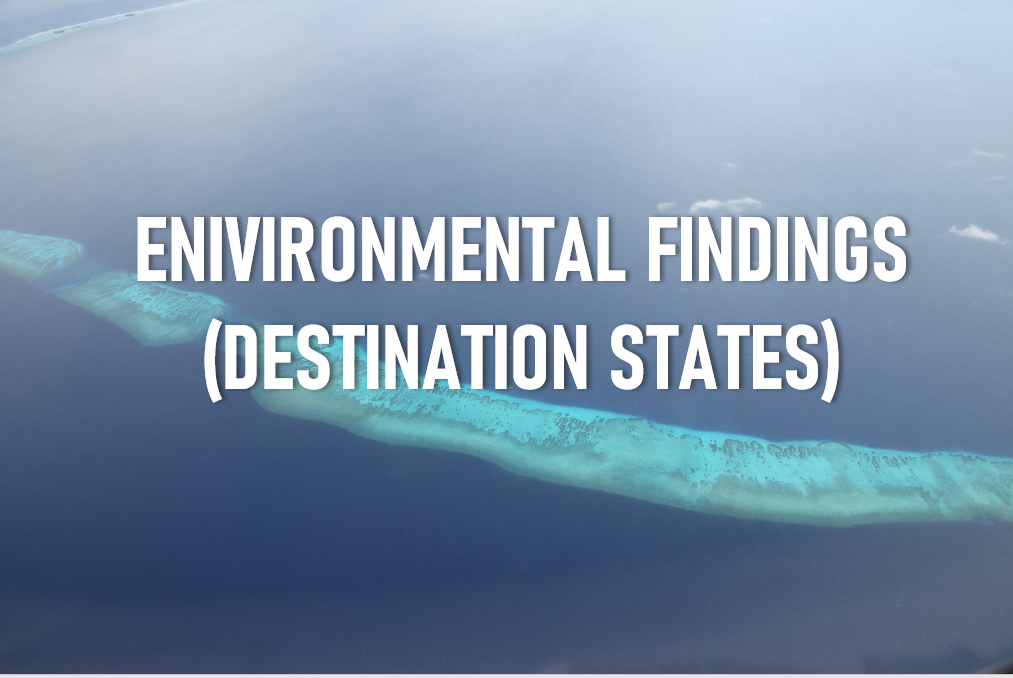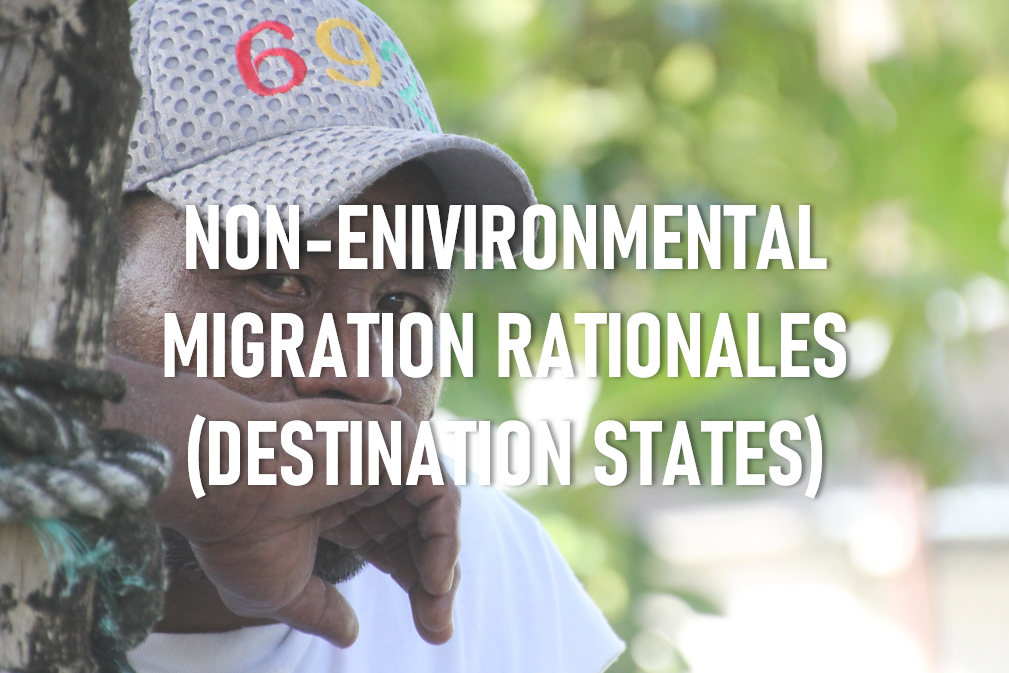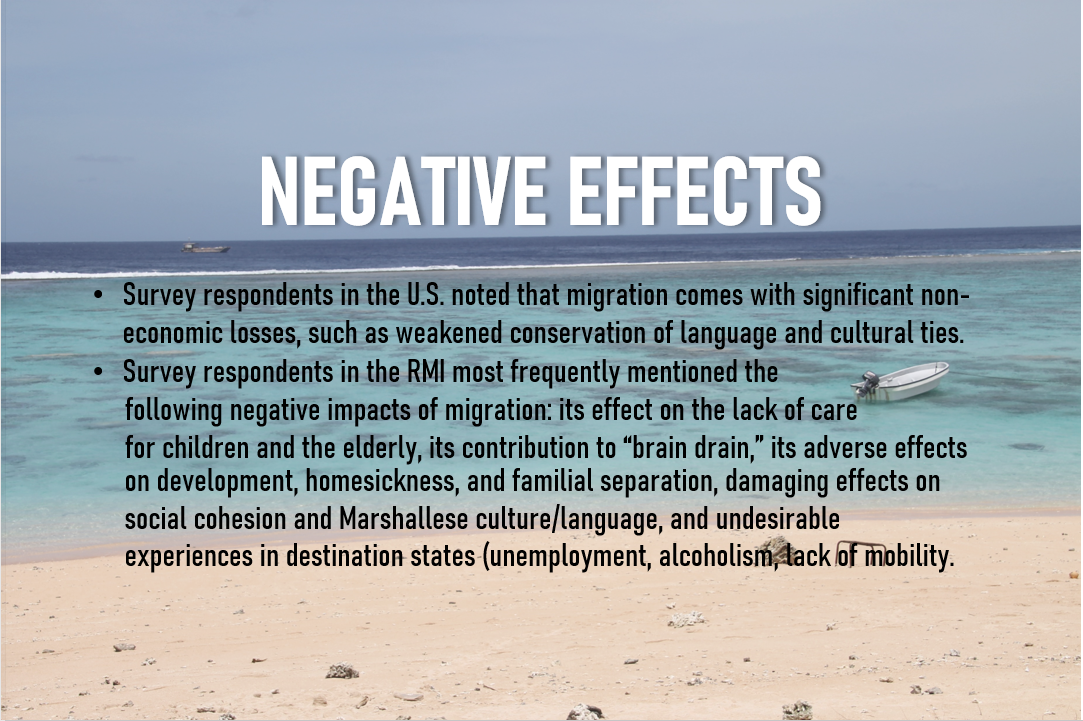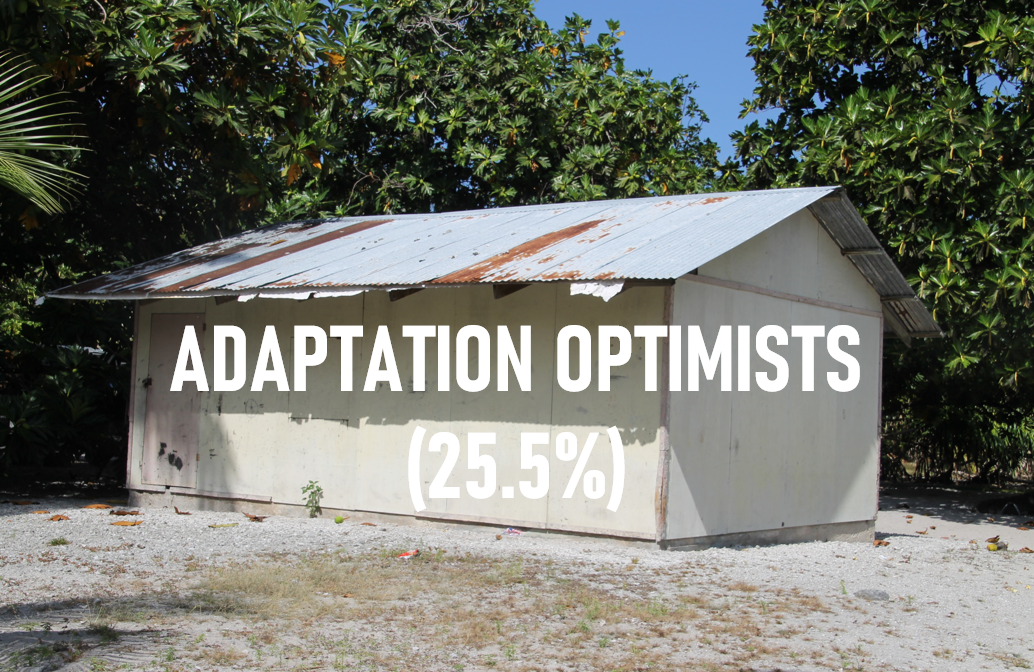FINDINGS SNAPSHOT
[QUESTION 1] To what extent are climate-related stressors—and their impacts on ecosystems, livelihoods, and habitability—driving migration in the Marshall Islands and from the Marshall Islands to the U.S.?
•Survey respondents identified sea-level rise as the most threatening factor facing their previous residences in the RMI, followed by ocean pollution.
•Many more respondents in the U.S.—and particularly in Hawai‘i—cite environmental problems in the RMI as a driver for moving than those presently living in the RMI.
•There is a positive correlation between the lack of access to drinkable water/freshwater sources as a threat to the respondent’s previous living situations in the RMI and their reluctance to return to the RMI. Sea-level rise was also mentioned as a factor that works against a future return to the RMI.
•This study finds no statistically significant relationship between sea-level rise and the decision to migrate to Hawai‘i or the Pacific Northwest.
•95% of respondents in the U.S. noted that king tides have drastically increased in recent years, and there were also high rates of concern about drought and heat waves.
•Although the most pressing problems identified by those living in the RMI were a lack of job opportunities, respondents also ranked drought (2nd), lack of fresh water (3rd), and sea-level rise (4th) as serious concerns when problem ranking statements.
•Half of respondents in the RMI perceived a general negative trend in ecosystem services (the provision of local food and access to freshwater, fuelwood, and safety). Household members of these respondents are more likely to intend to migrate in the next 10 years.
•The survey found a positive correlation between household-level impacts of heat waves, storm surges, and migration propensities—an indication that migration propensities tend to be higher in climate-stressed households.
•This study found no statistically significant difference in migration rates of households within and outside areas that had recently been flooded in the RMI.
•Respondents in destination states selected education (80%), health care (72.5%), economic opportunities (70%), and familial networks (70%) as the most prominent drivers of migration.
•Respondents also noted the inadequacy of the health and education systems and the stagnation of the economy in the RMI as significant reasons for recent migration.
•55% of those based in Hawai‘i stated their rationale for moving to the state above others was its proximity to the RMI, its more closely aligned culture, and its strategic positioning as a departure point to travel to the Continental U.S. 82.5% of respondents in Hawai‘i cited familial networks and the support system provided by extended family in diaspora as important to their rationale for migration.
•In the RMI, respondents identified job opportunities as their greatest concern, though migration for better education and health care is also common.
•The primary reason that migration for work occurs is limited opportunity for generating income on the outer islands because of stagnant (government) wages, delayed payment of goods sold and delivered, insufficient diversity in livelihoods and income sources, and a deterioration of the island’s productivity.
•The primary reason behind the decision to migrate for education or health care is the low level of these services on the island.
•40% of respondents noted that family networks were a factor in their migration decisions.
[QUESTION 2] What are the impacts of migration on migrants themselves and their home communities?
[QUESTION 3] Which shared views on climate change, environment, migration, and future habitability exist within the study population?
In the Republic of the Marshall Islands (RMI), we identified three groups of shared views:
MIGRATION CRITICS (43.6%):
Satisfied with the quality of life, development, governance, and security in the RMI.
Clear about not wanting to move, and very critical about the impacts of migration, both in the RMI and for migrants themselves.
Happy with life as it is now, but do worry about the future of their islands.
ADAPTATION OPTIMISTS (25.5%):
More critical about the quality of life in the RMI, and especially the lack of employment.
Optimistic about the future of their islands.
Do not perceive the problems and risks that the other groups do, and answered more optimistically about future habitability, climate risk preparedness, and level of adaptive capacity.
Do not oppose migration and think it can be part of the solution, but are critical about the impact of migration on Marshallese culture
ISLAND PESSIMISTS (14.9%):
Clearly dissatisfied with life in the RMI, and have a strong desire to move to a different place, preferably the U.S.
Very critical about changes in the quality of life, governance, development, and livelihood security in the RMI, and question the future habitability of their islands
See migration to the U.S. as the best or the only option, and are very positive about the positive impacts of migration
In hawai'i, we identified two groups of shared views:
HABITABILITY PESSIMISTS (45.0%):
Have had their livelihoods affected by climate-related stressors
Have experienced discrimination
Possess a fatalistic perspective on future island habitability, and note the Marshallese government’s lack of a resilience strategy,
Have a neutral position on employability in Hawai‘i
Have often come to Hawai‘i to seek health care.
MIGRATION OPTIMISTS (37.5%):
View migration as a successful adaptation strategy
Try to integrate in the U.S. while also valuing preservation of Marshallese culture
Perceive that they have improved livelihoods in Hawai‘i and place less importance on climate issues than ‘Habitability Pessimists’
IN the pacific northwest, WE IDENTIFIED Three GROUPS OF SHARED VIEWS:
HEALTH CARE MIGRANTS (30.8%):
Migrate to seek health care, employment, and training
Have had their livelihoods and food security affected by a changing climate
Place weight on the importance of remittances rather than government’s support
COMMUNITY SUPPORTERS (28.2%):
Have strong cultural ties with Marshallese culture
Migrate for employment and health care
Feel threatened by environmental changes in their past residence
CLIMATE-CONCERNED MIGRANTS (25.6%):
See climate as a future driver of migration
Believe that climate change is worsening extant environmental issues caused by nuclear testing
Have experienced discrimination in the Continental U.S.
Please note that percentages do not add up to 100 percent because some respondents did not fit into the shared views.















